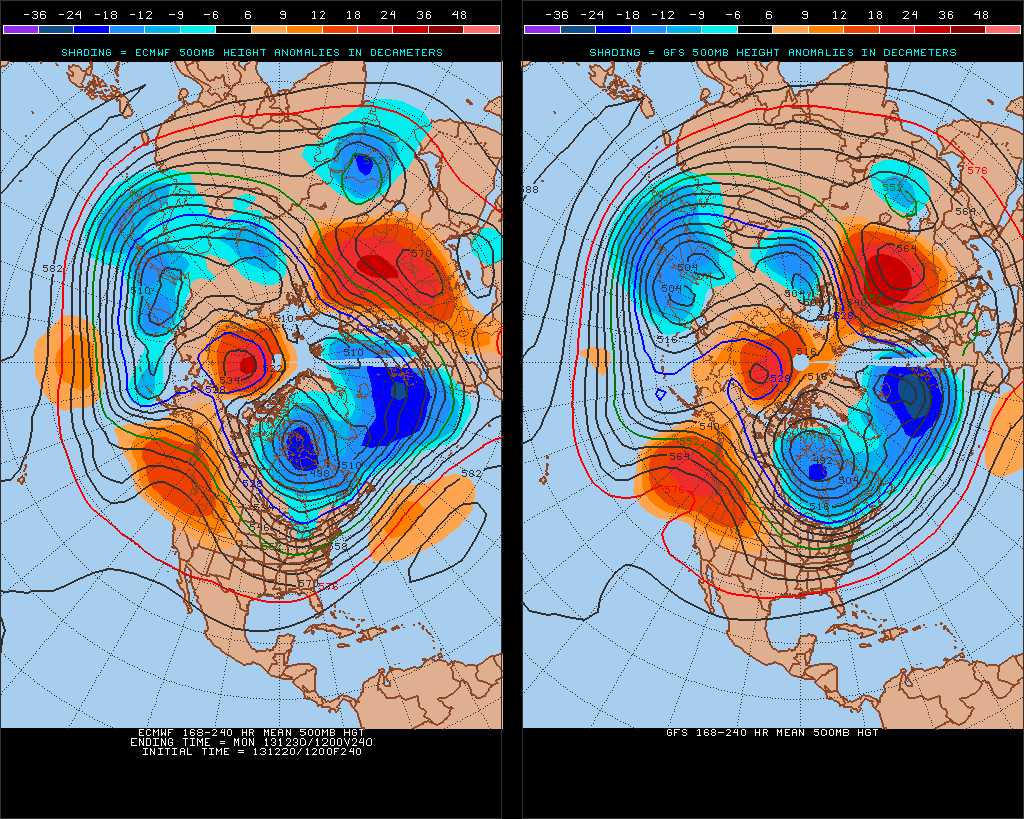Before we go into the cold pattern that is looming, our current forecast of severe flooding developing across central Indiana this weekend remains. Our projected precipitation numbers remain in the 3-4″ range for most of central Indiana, but there will be some higher totals reported. Combine that with the recent snow melt and the stage is set for potentially a severe and dangerous flooding event.
As we look ahead to the next weather “challenge,” it has to do with temperatures. As we’ve talked about in previous posts, our weather pattern flipped to one that has been predominantly colder than normal back in the middle of October. Despite a handful of days, cold has dominated the pattern. Before our current thaw temperatures were averaging 5 degrees below normal for the month of December. While the recent thaw is certain to reduce the anomalous cold, the last week of December could send us right back to readings much colder than average, helping put the exclamation point on the month as far as cold goes.
The latest 8-10 day ensemble plots showcase a very cold pattern to end December. Cross polar flow gets involved, helping lead to some bitterly cold air around these parts. We note excellent agreement between the GFS and European forecast models, helping to further increase our confidence in the cold pattern ahead.
But it doesn’t stop there… We note long range data suggesting this cold pattern continues well into January.
The latest European forecast ensembles showcase the cold continuing to reload into the first week of the month. This is an impressively cold look, considering we’re still a couple weeks out and that these are a multitude of individual computer model runs averaged together to come up with this solution.
As we watch the evolution of the cold pattern, it’s important to turn to the “goings-on” with the upper air pattern. Note the reorganization of the polar vortex and, equally as important, the placement of the polar vortex. For the purpose of giving you a couple of different viewpoints of the evolution of the pattern we’ve pasted a Northern Hemisphere and North America perspective.
Note how the polar vortex reorganizes itself and decides to set up shop over Hudson Bay and Baffin Island by early January. This is significant in that it promotes multiple reinforcing shots of arctic air into the eastern half of the country and backs up what the data above would suggest in the cold pattern that appears to be looming as we move forward…
Sunday, December 22nd
Friday, January 3rd
What does all of this mean? That the current “thaw” is very brief. The seeds were being planted for a return of the cold pattern earlier this week and it all begins Sunday night. As the data above would suggest, the arctic cold appears to reinforce itself as we go through time and an overall prolonged colder than normal pattern appears to be setting itself up.
Additionally, we’ll have to handle winter storm systems as they come (and they will), but the pattern is one that very well may promote fast-moving clipper systems moving southeast out of Canada. While most of these clipper systems don’t drop tremendous snowfall totals, the more potent clippers can deposit several inches of snow and serve to “feed back” and turn what’s initially a cold, dry pattern into one that’s suddenly snowy. We’ll keep an eye on that. Furthermore, the southern stream may also decide to add a little “excitement” into our forecast late December or early January.
Needless to say, there’s a lot of weather to talk about in the days ahead…






